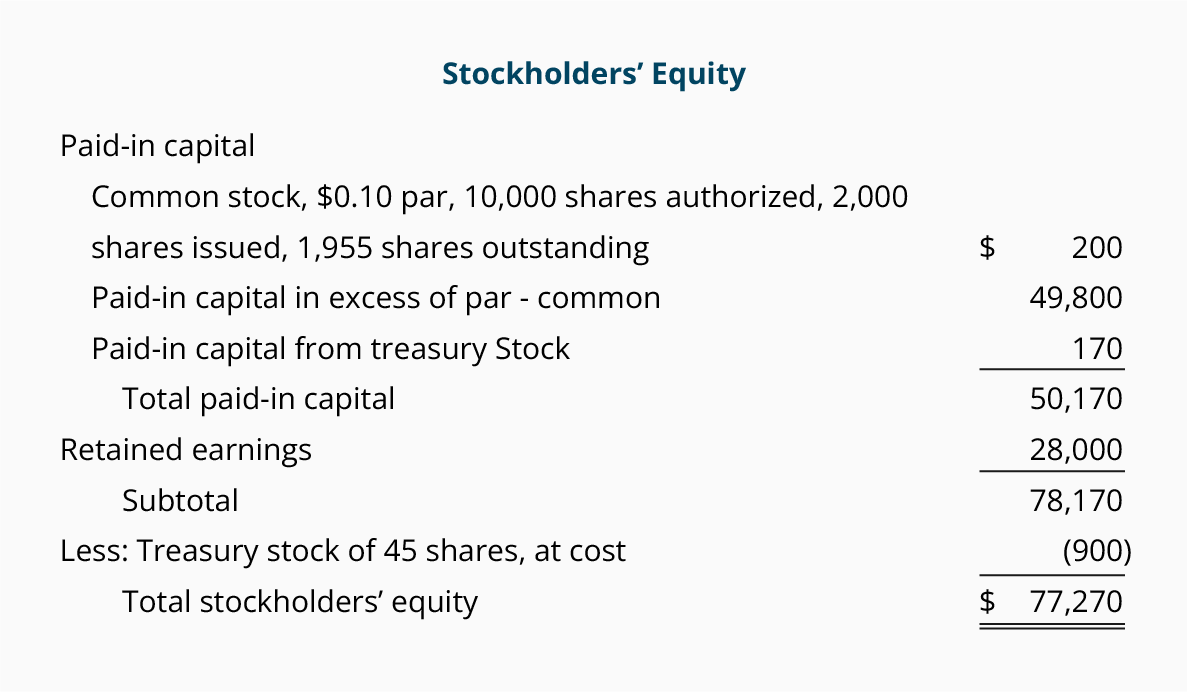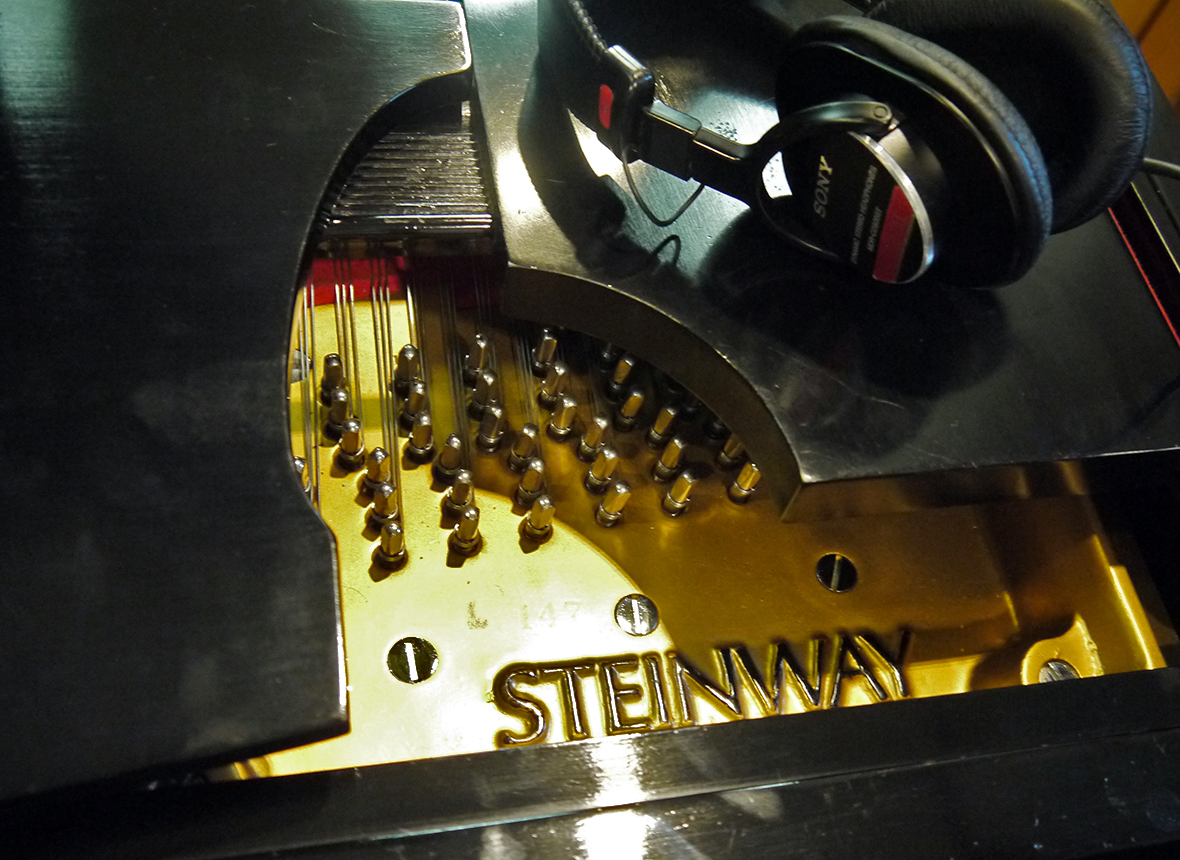Treasury Stock Method: Definition, Formula, Example

By contrast, under the par value method, share buybacks are recorded by debiting the treasury stock account by the shares’ total par value. When shares are acquired, the Treasury Stock account is debited and the Cash account is credited. When the shares are reissued, Cash is debited for the proceeds and Treasury Stock is credited for the amount paid out originally. The additional 5,000 shares (the difference between 10,000 assumed issued shares, and 5,000 assumed repurchased shares) represent the net newly-issued shares resulting from the potential options and warrants exercise.
- Treasury stock transactions can only reduce the retained earnings of a company and cannot increase them back.
- On the cash flow statement, the share repurchase is reflected as a cash outflow (“use” of cash).
- Each method and situation has unique journal entries that reflect the correct way to record these equity transactions.
- Get instant access to video lessons taught by experienced investment bankers.
- There are two methods of accounting for treasury stock, the cash method and the par value method.
Par Value Method

Treasury shares do not carry the basic common shareholder rights because they are not outstanding. Dividends are not paid on treasury shares, they provide no voting rights, and they do not receive a share of assets upon liquidation of the company. There are two methods possible to account for treasury stock—the cost method, which is discussed here, and the par value method, which is a more advanced accounting topic. The cost method is so named because the amount in the Treasury Stock account at any point in time represents the number of shares held in treasury times the original cost paid to acquire each treasury share. The par value method is an alternative way to value the stock acquired in a buyback. Under this method, shares are valued according to their par value at the time of repurchase.
AccountingTools
The percentage of profits or losses attributable to a single partner is decided when the partnership agreement is signed. Every time a partner joins or leaves the business, the partnership agreement is renewed. These may include forms such as sole proprietorship, partnership or company. The single owner invests in the business initially and owns the business until the business tax filing options is sold or another owner joins the business. In addition, the applicable additional paid-in capital (APIC) or the reverse (i.e. discount on capital) must be offset by a credit or debit. Treasury Stock represents shares that were issued and traded in the open markets but are later reacquired by the company to decrease the number of shares in public circulation.
Par Value Method of Treasury Stock FAQs
This is done to reflect the reality that the majority of unvested options have a high probability of vesting someday, which is a practice that investors and firms have increasingly adopted in recent years. No, APIC account records all paid-in capital that is not considered to be part of the par or stated value of issued shares. This includes additional paid-in capital from other sources such as employees and suppliers. In financial markets, the term ‘Treasury Stock’ holds significant weight, impacting a company’s financial standing and influencing shareholder value. Understanding its nuances is crucial for investors navigating the ever-evolving landscape of stocks and equities.
Retired treasury stock – as implied by the name – is permanently retired and cannot be re-instated on a later date. The value attributable to each share has increased on paper, but the root cause is the decreased number of total shares, as opposed to “real” value creation for shareholders. Ask a question about your financial situation providing as much detail as possible. Our writing and editorial staff are a team of experts holding advanced financial designations and have written for most major financial media publications. Our work has been directly cited by organizations including Entrepreneur, Business Insider, Investopedia, Forbes, CNBC, and many others. Our team of reviewers are established professionals with decades of experience in areas of personal finance and hold many advanced degrees and certifications.
Under the cost method, the more common approach, the repurchase of shares is recorded by debiting the treasury stock account by the cost of purchase. Assume the total sum of ABC Company’s equity accounts including common stock, APIC, and retained earnings was $500,000 before the share buyback. When a shareholder donates shares back to the corporation without compensation, these shares are recorded as treasury stock at fair market value (FMV) on the date of donation. This transaction doesn’t affect total stockholders’ equity since it simply reallocates value between Treasury Stock and APIC. When reissuing treasury stock under the cost method, treasury stock is credited at its original repurchase cost. If reissued above the repurchase cost, any gain is credited to APIC; if reissued below cost, the deficit is debited to APIC or to Retained Earnings if APIC is insufficient.
Following the repurchase, the formerly outstanding shares are no longer available to be traded in the markets and the number of shares outstanding decreases – i.e. the reduced number of shares publicly traded is referred to as a decline in the “float”. In this case, the balance of the Treasury Stock account is deducted from total equity, including Other Paid-In Capital and Retained Earnings. If both common and preferred treasury shares are held, they should be disclosed separately. The simplest and most widely-used method for accounting for the repurchase of stock is the cost method. Occasionally, a corporation’s board of directors will vote to execute a special purchase of non-callable stock with the express purpose of retiring the shares rather than holding them indefinitely as treasury stock. If allowed by state laws and the corporation’s bylaws, the board of directors can vote to retire shares of stock.
It can be a strategic maneuver to prevent another company from acquiring a majority interest or preventing a hostile takeover. A purchase can also create demand for the stock, which in turn raises the market price of the stock. Sometimes companies buy back shares to be used for employee stock options or profit-sharing plans.
This team of experts helps Finance Strategists maintain the highest level of accuracy and professionalism possible. The reasons for crediting Additional Paid-in Capital and debiting Retained Earnings are the same as for retirements of newly acquired shares. Occasionally, a corporation may repurchase its stock with the intention of retiring it rather than holding it in the treasury. This process of going private is often accomplished through treasury stock purchases because corporate funds are used instead of the personal resources of the surviving stockholders.
Companies oftentimes disclose both their “outstanding” and “exercisable” options, since certain outstanding options will have yet to vest. In their simplest forms, sole proprietorships and partnerships are unlimited liability businesses. This means that when the business winds up, all the liabilities of the business are transferred to its owners.







